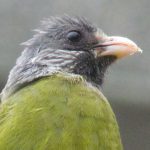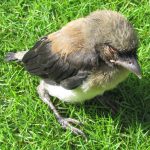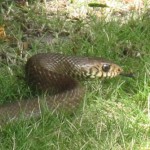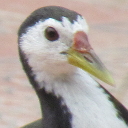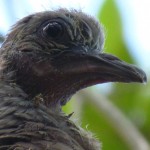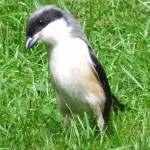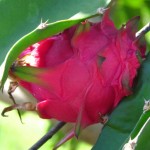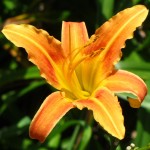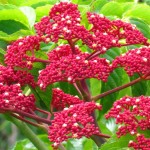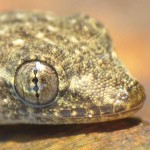Flora and Fauna of Tropical Asia
The fascinating world of tropical nature
Collared Finchbill – Most Devoted Bird Parents?
It’s always a pleasure to discover that a new species of bird has moved into one’s garden to start a family. Such was the case earlier this year when a pair of collared finchbills (Spizixos semitorques) established their residence in one of the trees near my house, thus becoming regular sight throughout the day. These are very pretty birds, medium sized (around 20 centimetres from head to tail) with green bodies, black heads and white “collars” which give them their name. They are skilled fliers, quite noisy at times and, like their bulbul cousins, are not particularly… Continue reading
Hand-Raising Grey Treepie Chick
Following my dramatic (and heartbreaking) encounter with the Grey treepie (Dendrocitta formosae) three years ago, I kept hoping to find an opportunity to take a good photo of this stunning predator. The chance finally presented itself earlier this week. But it wasn’t exactly as I envisioned it; instead of sighting the bird in a not-too-distant place and in a good light, as one always hopes with any wildlife, I chanced upon one helpless little baby treepie right on the side of a paved road while I was riding by on a bicycle!
Of course, I had never seen… Continue reading
Brief Encounter with Oriental Ratsnake
With 50 species of snake, many of which are endemic, Taiwan has to be one of the best places to visit if you are a herpetologist or if you simply enjoy observing these fascinating, if sometimes dangerous, animals. They are plentiful here, especially during the warmer months, and also highly elusive. As such, your best chances of seeing one, sadly, is on a paved road or a freeway, flattened to death by speeding vehicles. That said, once in a while you might get lucky and spot one in the wild, although this is likely to be a very brief encounter,… Continue reading
Rwak-Rwak, White-Breasted Waterhen
“Where could the fish go?” I was quietly wondering after numerous attempts at counting the koi fish in the fish tank located in one corner of the front yard. It’s a small concrete vessel, about 80 centimetres tall and with a diameter of about one metre. I keep a few colourful koi in there; they are lovely – always keen to emerge from the depth and open their mouths whenever the feeder appears in their sight. I had three of them for several years, but a few months ago I added a dozen more, mostly small ones. Unfortunately, some of… Continue reading
Spotted Dove as Pet?
It is the second time in less than a year that I am hand-feeding a lost Spotted dove (Spilopelia chinensis) chick. The first time it happened was after a powerful typhoon blew the helpless baby bird to my neighbour’s garden where it sat still, wet and confused, waiting for a predator to have an easy meal. I used a mixture of soft millet and special powder for lories and lorikeets which I dissolved in water, heated up to 40°C and fed to the bird’s beak with the help of a long, narrow syringe, twice a day. I repeated… Continue reading
Long-Tailed Shrike
Every morning at precisely 5:30, a harsh, loud rattling call of a long-tailed shrike (Lanius schach), gives us an untimely wake-up call. Standing on a branch of a tall tree just outside our first-floor bathroom, this bird is the earliest riser as it makes a quick tour of its territory. There it announces, in no uncertain terms, that this piece of land is its personal hunting ground and completely off-limits to any other member of its species. Personally, I don’t find the natural call of a shrike too unpleasant, but it certainly is a far cry from the… Continue reading
Fire Dragon Fruit
One of the more unusual fruits one often comes across while travelling through tropical Asia is the dragon fruit (Hylocereus undatus). This attractive-looking produce grows on a vine belonging to the Cactaceae family which seems somewhat out of place in the lush tropical vegetation of south-east Asia. Indeed, the plant originates in central America where it is known as “pitahaya”. The fact that it has been cultivated so successfully in many parts of Asia (including Cambodia, Indonesia, Malaysia, the Philippines, Sri Lanka, Vietnam, Thailand and Taiwan) shows its remarkable ability to survive in extreme conditions – from dry… Continue reading
Daylilies and Golden Needles
When a friend of mine suggested a weekend trip to Chike mountain (赤科山) in southeastern Taiwan’s Hualien county to check out the region’s famous daylilies, I was under the impression that we were going to see wild flowers growing freely in the area. Once on the spot, however, it became clear that these beautiful perennials, called orange daylilies (Hemerocallis fulva), are not only great to look at, they are also a sought-after delicacy known locally as “golden needle flower” (金針花). As such, the plant is commercially farmed and harvested for food. Still, in bloom the densely planted flowers… Continue reading
Leea Guineensis
I came across this spectacular flowering shrub during one of my cycling trips around Taitung in southern Taiwan. Two days later I was back with a camera to take some photographs and for the past hour or so I’ve been researching the Internet for clues about the name and origin of the plant. Without too much conviction I’ve settled on Leea guineensis, although it could also be Leea rubra. The former, as its Latin name suggests, comes from tropical Africa, but the latter is an Asian plant that grows throughout south-east Asia, New Guinea and northern Australia. Either… Continue reading
Common House Gecko
The common house gecko (Hemidactylus frenatus) is an unmistakable sight and sound throughout much of tropical Asia. Remarkably well adapted to human habitations where it easily climbs even the smoothest of surfaces, this nocturnal reptile hunts for insects that tend to congregate near light sources. It usually hides during the day. Its large and powerful eyes allow the animal to see any potential threat from a safe distance and move away in rapid if somewhat clumsy movement. The ability of a gecko’s feet to adhere to a variety of surfaces is well documented and the vocalisation it produces,… Continue reading
